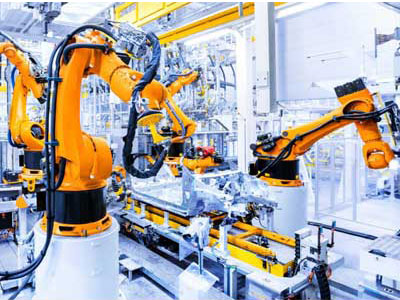Key Takeaway
The most used industrial robot is the cartesian robot. This type of robot is widely employed in industries for its simplicity and precision. Cartesian robots operate on three linear axes, making them ideal for tasks like CNC machining and 3D printing. They are popular due to their straightforward design and ability to handle repetitive tasks with high accuracy. Their applications range from material handling to assembly operations, ensuring consistent performance in various industrial settings. This versatility and reliability make cartesian robots a top choice in many manufacturing processes.
Articulated Robots Overview
Articulated robots are renowned for their flexibility and human-like range of motion, thanks to rotary joints and diverse end-effectors. These robots excel in handling various tasks across multiple industries. Their capability to navigate confined spaces and access different angles makes them indispensable on manufacturing and assembly lines, where precision and adaptability are crucial. They can perform tasks such as welding, painting, and material handling with high accuracy. Their versatility and efficiency contribute significantly to increased productivity and consistency in industrial processes, making them a valuable asset in modern automation.

Key Features and Capabilities
In the realm of electronics assembly, articulated robots stand out for their ability to handle intricate tasks with exceptional accuracy and speed. These robots, resembling a human arm with multiple joints, are designed to navigate densely packed circuit boards and delicate electronic components, ensuring precise placement and soldering.
One of the key advantages of articulated robots in electronics assembly is their adaptability to diverse product designs and configurations. From smartphones to complex circuitry in industrial equipment, these robots can be programmed to perform tasks such as pick-and-place operations, soldering connections, and quality inspection with utmost precision.
Equipped with advanced vision systems and tactile sensors, articulated robots in electronics assembly can detect minute variations in component alignment and surface conditions. This capability not only enhances product quality by reducing defects but also improves assembly line efficiency by accelerating production cycles.
Furthermore, in industries where scalability and flexibility are crucial, articulated robots offer a cost-effective solution. By automating repetitive tasks that would otherwise be labor-intensive, manufacturers can achieve higher throughput and maintain consistency in product quality across large production volumes.
Popular Applications
Articulated robots find widespread application across various industries, owing to their versatility and efficiency in automating complex tasks. In automotive production, these robots streamline assembly lines by performing tasks like picking and placing components with speed and accuracy. They are also instrumental in electronics manufacturing, where they handle delicate processes such as circuit board assembly with precision.
Beyond manufacturing, articulated robots are increasingly used in healthcare for tasks ranging from surgical procedures to patient care, highlighting their adaptability and reliability in critical environments. Their capability to perform repetitive tasks tirelessly and with consistent precision makes them invaluable across diverse sectors.
Industry Adoption Rates
The adoption of articulated robots in industries worldwide has seen a significant upward trend, driven by advancements in robotics technology. These robots, known for their flexibility and precision, are increasingly becoming integral to industrial workflows. They offer substantial benefits such as enhanced productivity and cost efficiency, making them attractive investments for companies aiming to streamline operations.
Industries ranging from automotive manufacturing to electronics assembly are leveraging articulated robots to gain a competitive edge. By automating repetitive tasks and performing complex maneuvers with consistency, these robots help meet the increasing demands of consumers for faster turnaround times and higher product quality. This adoption is not just a trend but a strategic move towards future-proofing operations against evolving market dynamics.
Leading Manufacturers
When it comes to articulated robots, several key manufacturers dominate the market, each offering specialized models designed to meet specific industry requirements. Fanuc, ABB, KUKA, and Yaskawa are among the leading players renowned for their innovation and reliability in industrial robotics.
Fanuc, for instance, is known for its robust robots capable of handling heavy payloads with utmost precision, ideal for industries like automotive and aerospace. ABB focuses on collaborative robots (cobots) that work alongside humans, enhancing safety and efficiency in manufacturing environments. KUKA’s robots excel in industries requiring high-speed and high-accuracy operations, such as electronics and pharmaceuticals. Yaskawa, with its wide range of robots, caters to diverse industrial applications, ensuring flexibility and performance.
These manufacturers not only provide cutting-edge technology but also comprehensive support and training to ensure seamless integration and operation of their robotic systems. Their dominance in the market underscores their commitment to pushing the boundaries of industrial automation, setting benchmarks for reliability, performance, and innovation.
Conclusion
In conclusion, articulated robots stand as the cornerstone of industrial automation, driving efficiency, precision, and innovation across various sectors. Their unmatched versatility, coupled with continuous advancements in technology, solidifies their position as the most widely used industrial robot globally.
